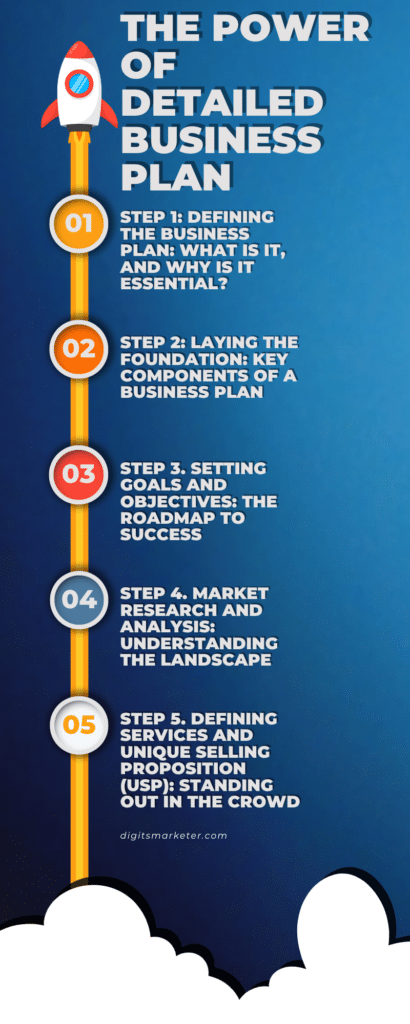The Power of a Detailed Business Plan
Introduction
It is very important to take advantage of the power of a detailed business plan. Starting a business can be an exhilarating endeavor, brimming with creative opportunities and the potential to make a significant impact in the industry. However, embarking on this journey without a well-thought-out business plan is like sailing without a compass – it leaves you adrift, uncertain of your direction, and more susceptible to the challenges that lie ahead. A detailed business plan is the cornerstone of every successful business, providing a roadmap to navigate through the complexities of entrepreneurship. In this post, we will delve into the compelling reasons why crafting a comprehensive business plan is crucial for your business’s growth and success.
Business Plan Executive Summary


1. Defining the Business Plan: What is it, and Why is it Essential?

2. Laying the Foundation: Key Components of a Business Plan

3. Setting Goals and Objectives: The Roadmap to Success
4. Market Research and Analysis: Understanding the Landscape

5. Defining Services and Unique Selling Proposition (USP): Standing Out in the Crowd

6. Crafting an Effective Marketing and Sales Strategy: Attracting and Retaining Clients

7. Operational Structure and Management: Building a Solid Foundation

8. Financial Planning and Projections: Securing Stability and Growth

9. Risk Assessment and Mitigation: Preparing for the Unexpected

10. Monitoring and Evaluation: Adapting and Thriving
